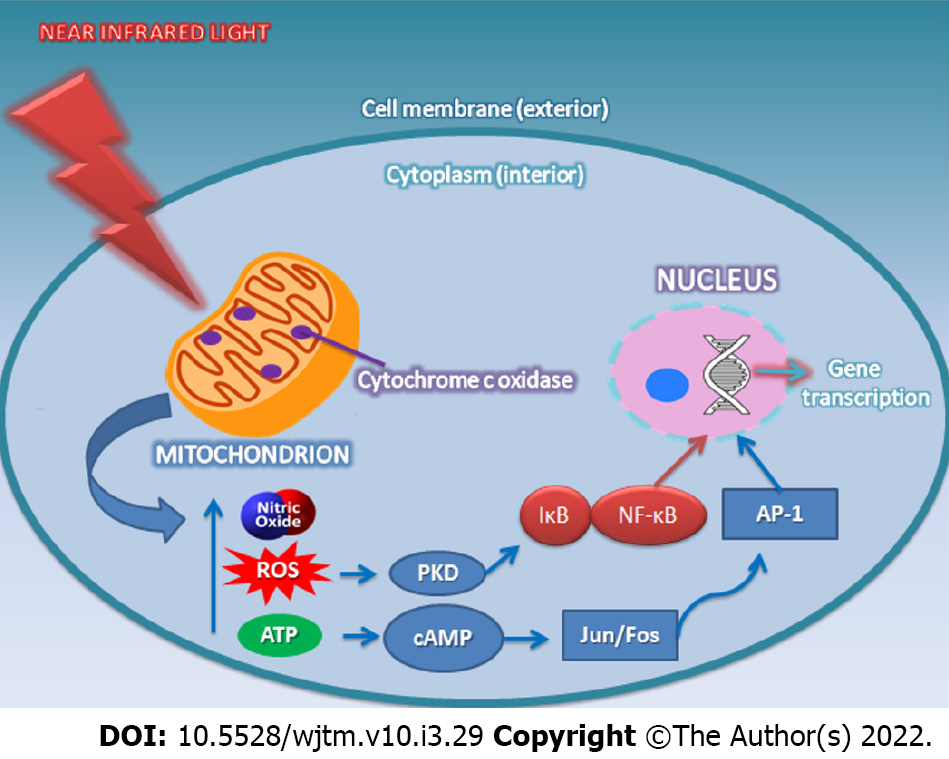Examine This Report about Photobiomodulation
Wiki Article
Photobiomodulation Can Be Fun For Anyone
Table of ContentsPhotobiomodulation Can Be Fun For AnyoneRumored Buzz on PhotobiomodulationThe Best Guide To PhotobiomodulationThe Buzz on Photobiomodulation
Laser treatment is a clinical therapy that makes use of concentrated light to promote a procedure called. Throughout PBM, photons go into the cells and connect with the cytochrome c facility within mitochondria. This communication triggers an organic cascade of occasions that results in a rise in cellular metabolic rate, which can in addition to speed up the healing procedure.There is agreement that the application of a restorative dose of light to impaired or dysfunctional cells leads to a cellular feedback moderated by mitochondrial systems. Photobiomodulation. Research studies have shown that these modifications can affect discomfort and swelling, as well as, cells repair service
Adjustments in ATP, reactive oxygen varieties and nitric oxide comply with light absorption by Cc, O. These impacts are redox state and dose reliant. In hypoxic or otherwise worried cells it has actually been shown sometimes that adhering to, nitric oxide is launched, ATP is enhanced and oxidative stress is lowered [27-31]

The Best Guide To Photobiomodulation
PBM gadgets have actually been removed for advertising by FDA through the Premarket Notification/510( k) process as adjunctive devices for the short-lived alleviation of pain. These clearances were based upon the discussion of clinical data to sustain such insurance claims (Photobiomodulation). In this treatment, a light is placed near or touching the skin, permitting the light power (photons) to pass through tissue where it interacts with chromophores located in cells leading to photophysical and photochemical modifications that result in changes at the molecular, mobile and cells degrees of the bodyInterestingly, recent research indicates that light can boost efficiency in typical cells and cells. The possible applications of PBMT are numerous and are being discovered experimentally at the standard science, pre-clinical and professional level. The present scientific usages are for the relief of pain and inflammation and the therapy of sports injuries.

The treatment criteria and number of sessions needed for PBMT are reliant upon location and reason. PBMT usually requires more than one therapy for ideal discomfort alleviation.
The Best Strategy To Use For Photobiomodulation
Treatment criteria for PBMT were originally developed using cells artificial insemination and in little animal models. navigate here These treatment criteria usually had a low irradiance and fluence and worked well for cutaneous applications. When clinicians started to utilize PBMT to treat structures that were situated deeper in the body, they used these specifications with unfavorable outcomes.
We currently comprehend that these negative studies were due to inaccurate device and therapy specifications for transcutaneous treatment of deeper frameworks. Recent breakthroughs in laser treatment tools and even more research into the proper dosages have actually dramatically improved the results of PBMT. For treating deep cells, the wavelength of light used determines the deepness of infiltration right into a cells.
It is important that a medical professional uses the suitable wavelength of light and specifications to treat a problem. One wavelength and one set of treatment parameters will certainly not be effective for all problems. Negative side results have not been reported from the use of see this here PBMT.
Some Known Details About Photobiomodulation
In the first experiment, Dr. Endre Mester, utilized cut rats and observing just how the laser affected their ability to grow hair contrasted to the team that was not obtaining LLLT. He found that the team of computer mice getting LLLT had the ability to expand their hair back quicker than the group of mice that really did not get LLLT (Hoon C, et al; 2012).This therapy is called in this manner to separate the distinction between the lasers some careers make use of to reduce (eg. in surgical treatments, or dental procedures). Low-level light therapy is pain-free, non-invasive treatment. It is made use of to decrease swelling, swelling, and persistent joint disorders, minimize discomfort and increase injury recovery of nerves and tissues (Hoon C, et al; 2012).
LLLT has a biphasic action, indicating that reduced doses are generally attended be much more helpful than higher dosages. That being claimed, dosages higher or less than the optimal dosage doesn't influence (Hoon C, et alia; 2012). Consequently, it can be hard to have researches on LLLT with many parameters.
Some companies combined both (LED and laser) to provide an extra all-round treatment since lasers can penetrate deeper than LED and infrared light (Norman Doidge, The Mind's Means of Healing, 2015). During therapy, the area that is being visit homepage dealt with is subjected to LED light from a Bio, Flex Laser, which is at 660 nm wavelength, adhered to by infrared light at 830-840 nm wavelength.
Report this wiki page